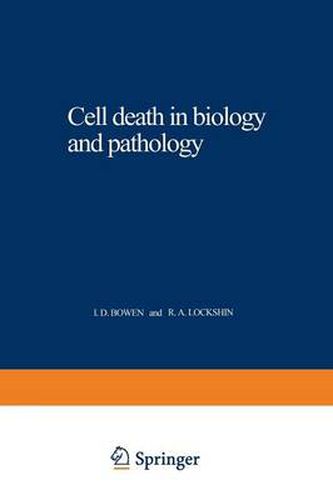Readings Newsletter
Become a Readings Member to make your shopping experience even easier.
Sign in or sign up for free!
You’re not far away from qualifying for FREE standard shipping within Australia
You’ve qualified for FREE standard shipping within Australia
The cart is loading…






This title is printed to order. This book may have been self-published. If so, we cannot guarantee the quality of the content. In the main most books will have gone through the editing process however some may not. We therefore suggest that you be aware of this before ordering this book. If in doubt check either the author or publisher’s details as we are unable to accept any returns unless they are faulty. Please contact us if you have any questions.
It is clear that lysosomal enzymes often play a role in the destruction of the cytoplasm, but very few authorities feel that they initiate the process (Chapters 1, 2, 3, 5 -8, 12, 13). The cells show many forms of damage, and sometimes even complete destruction, before Iysosomes become a dominant part of the environ ment. What initiates the process is still unclear, although in several instances it appears that the death of a cell may arise from anyone of several pathways (Chapters, 10, II). It is rather interesting that evolution has chosen to achieve the same goal by different means. Apparently no one point is exceptionally or pre ferentially vulnerable, though a common pathway, such as permeability of the plasma membrane to calcium (Chapter 7), might currently be too subtle for routine identification. Factors which affect membrane stability and which induce mem brane bending can lead to blebing, cell fragmentation and death. Thus, more work on the changing chemistry of the plasma membrane in relation to environmental fluctuations would be welcomed. Space requirements and the major orientation of the book forced the exclusion of several very interesting topics: an evolutionary treatment of the advantages of cell death as a means of eliminating vestigial organs or embryonic scaffolding; or consider ation of the merits of body sculpting by cell death rather than cell growth.
$9.00 standard shipping within Australia
FREE standard shipping within Australia for orders over $100.00
Express & International shipping calculated at checkout
This title is printed to order. This book may have been self-published. If so, we cannot guarantee the quality of the content. In the main most books will have gone through the editing process however some may not. We therefore suggest that you be aware of this before ordering this book. If in doubt check either the author or publisher’s details as we are unable to accept any returns unless they are faulty. Please contact us if you have any questions.
It is clear that lysosomal enzymes often play a role in the destruction of the cytoplasm, but very few authorities feel that they initiate the process (Chapters 1, 2, 3, 5 -8, 12, 13). The cells show many forms of damage, and sometimes even complete destruction, before Iysosomes become a dominant part of the environ ment. What initiates the process is still unclear, although in several instances it appears that the death of a cell may arise from anyone of several pathways (Chapters, 10, II). It is rather interesting that evolution has chosen to achieve the same goal by different means. Apparently no one point is exceptionally or pre ferentially vulnerable, though a common pathway, such as permeability of the plasma membrane to calcium (Chapter 7), might currently be too subtle for routine identification. Factors which affect membrane stability and which induce mem brane bending can lead to blebing, cell fragmentation and death. Thus, more work on the changing chemistry of the plasma membrane in relation to environmental fluctuations would be welcomed. Space requirements and the major orientation of the book forced the exclusion of several very interesting topics: an evolutionary treatment of the advantages of cell death as a means of eliminating vestigial organs or embryonic scaffolding; or consider ation of the merits of body sculpting by cell death rather than cell growth.